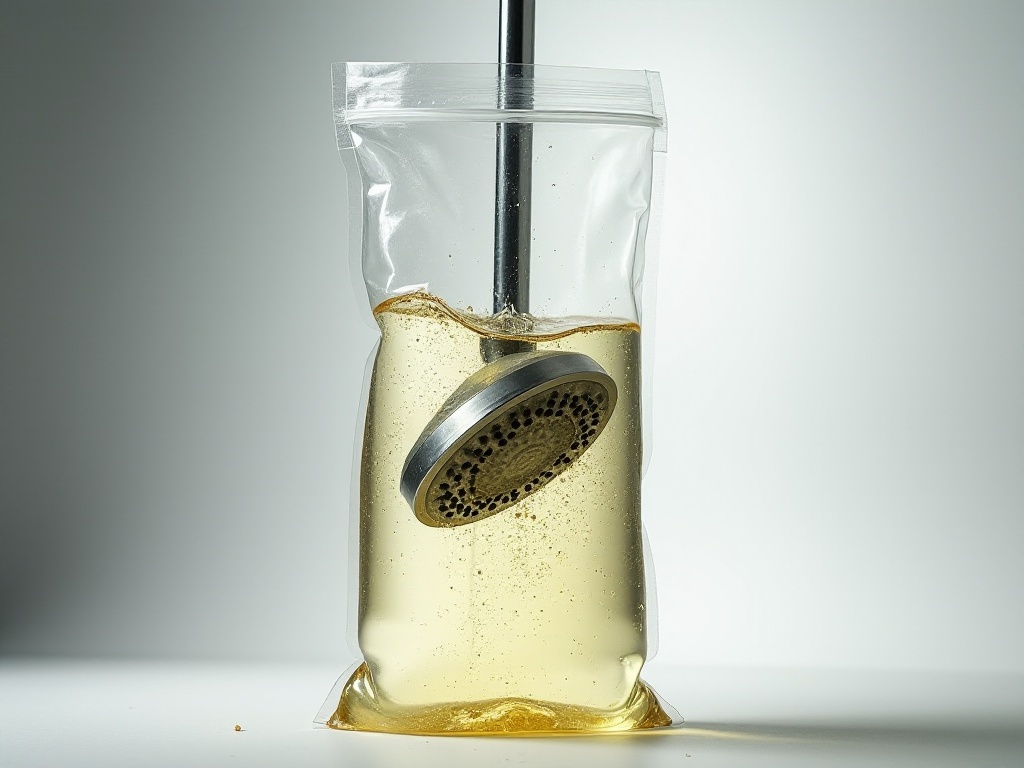The Secret of Coca-Cola
I never expected that Coca-Cola, which we casually buy to quench our thirst, could actually be used as a cleaner! As a recent graduate renting an apartment and working, I've taken this magical effect of Coke to new heights.
Why is Coke so effective? It turns out it contains phosphoric acid and carbonic acid. These two professional-sounding chemical terms are actually the key to Coke's effectiveness. When I first learned that Coke could unclog toilets, I was absolutely amazed! Many people asked me how to do it: it's actually very simple - just pour a room-temperature bottle of Coke into the toilet, wait 5 minutes, then flush.
I must say, this trick really works. Our dorm toilet used to clog frequently, and it was always embarrassing to call maintenance. Since discovering this method, it's been both cost-effective and worry-free. Not only does it unclog the toilet, but it also cleans limescale from the pipes - killing two birds with one stone!
Once, I accidentally got rust stains on my pants from a shared bike. I thought the pants were ruined. But then I had an idea - I soaked the pants in Coke overnight, and when I washed them the next day, the rust stains had faded significantly! I was so happy that I immediately shared this trick with my roommates.
Also, Coke can be used to remove rust. We had an old clothes drying rack on our balcony that had rusted from constant rain exposure. I bought two bottles of Coke and wiped down all the rusty areas. After waiting half a day and wiping it clean with a cloth, most of the rust was gone! This saved me the cost of buying a new drying rack.
Food Items Turned Cleaning Agents
Honestly, before I started living on my own, I had no idea that common kitchen ingredients could be such great cleaning helpers. Now I can't live without lemon, salt, and olive oil - they're my cleaning trinity!
Lemon is definitely my #1 cleaning secret weapon. Once, I bought a second-hand wooden cutting board, but after using it for a while, it developed a strange smell and lots of oil stains. I was about to throw it away and buy a new one when I saw online that you could use lemon to treat it. I bought some lemons to try - I cut one in half, dipped it in salt, and scrubbed the cutting board hard. Surprisingly, those stubborn oil stains that even dish soap couldn't handle were completely cleaned! Since then, I've used this method to clean my cutting board after each use - it's both clean and eco-friendly.
Salt is also great. After using my cast iron pan for a while, the bottom would always develop a layer of stubborn black residue. I would sprinkle coarse salt in the pan, add some hot water, then gently scrub with steel wool. Those stubborn black stains would be cleaned completely, and the pan bottom would regain its original shine.
As for olive oil, it has many uses. My wooden furniture had some scratches that were really eyesores. I gently rubbed olive oil on those scratches, and surprisingly, it worked remarkably well - the scratches became less noticeable, and the wood's shine returned. Now I condition my furniture with olive oil monthly, which not only covers scratches but also moisturizes the wood.
Then there's white vinegar, which is truly versatile. My faucets often develop limescale, which looks really unsightly. I would soak paper towels in white vinegar, wrap them around the faucets overnight. The next day, with one wipe, those stubborn mineral deposits would easily come off. Plus, white vinegar can remove formaldehyde - when I moved into my new place, I put several bowls of white vinegar around the room, and after a few days, the formaldehyde smell had diminished significantly.

Creative Tools Section
When it comes to cleaning tools, I have quite a few secret techniques. My proudest invention is the "mopping slippers." This idea came from my experience of being too lazy to grab the mop after coming home from work. I simply wrap cleaning cloths around the bottom of slippers, so I can clean wherever I walk - it's a lazy person's blessing!
When I first tried this method, I was worried it wouldn't work well. But after using it several times, I found that this way not only cleans the floor thoroughly but also serves as exercise. After all, walking around the house becomes unconscious exercise. Plus, this method is perfect for small apartments since you don't have to worry about where to store the mop.
Converting stockings into vacuum attachments is another of my proud innovations. Once, I accidentally dropped my diamond earring in the carpet and couldn't find it for ages. Just when I was at my wit's end, I thought about using the vacuum cleaner but worried the earring would get sucked up. Then I had a bright idea - I put an old stocking over the vacuum nozzle, so small items would get caught in the stocking rather than being sucked inside.
This method has helped me many times since. Whether it's jewelry, keys, or coins lost in the carpet, this modified vacuum cleaner finds them quickly. I also discovered this method works great for cleaning small stones from carpets since they get caught in the stocking instead of getting stuck in the vacuum.
Speaking of creative tools, I have another particularly useful invention: using old toothbrushes to clean bathroom tile grout. I collect unused toothbrushes specifically for cleaning those hard-to-reach places. Places like tile grout, faucet bases, and door frame edges are particularly convenient to clean with toothbrushes.
Window cleaning is also a technical skill. I discovered that using newspaper to clean glass works especially well and doesn't leave streaks. First, wipe the glass with clean water, then dry it with crumpled newspaper, and the glass becomes particularly bright. This method is not only environmentally friendly but also saves money on buying cleaning cloths.

Stubborn Stains
When it comes to stubborn stains, they can really be a headache. But after years of experimentation, I've now developed a complete set of solutions.
Crayon marks on walls are truly a nightmare for many families, especially those with young children. My nephew particularly loves drawing on walls, which always worries my sister sick. Later, I discovered a particularly effective method: use a hair dryer to heat up the crayon marks, and when the wax softens, wipe it off with a cloth. I've used this method many times now, and it perfectly solves the problem every time.
Tea and coffee stains are also difficult to handle. Once, I accidentally spilled coffee on my white sofa and was about to have a breakdown. Later, I made a paste with baking soda, applied it to the stain, let it dry completely, then vacuumed it away - surprisingly, it actually removed the stain! Since then, I've always kept baking soda at home specifically for treating various stains.
Oil stains are also tricky. Once I accidentally got oil on my clothes, and tried many cleaning agents without success. Later, I applied dish soap directly to the oil stain, let it sit for ten minutes, then washed it with warm water, and the oil stain gradually faded. Turns out dish soap isn't just for dishes - it's also effective for treating oil stains on clothes.
Carpet stains are even more troublesome. My beige carpet has suffered quite a bit, with various beverages and foods spilled on it. Later, I discovered that wiping with a mixture of white vinegar and warm water, then absorbing the moisture with a dry towel, could remove most stains. For particularly stubborn stains, I would make a paste with baking soda and white vinegar, apply it to the stain, let it dry, then vacuum it away.

Cleaning Strategy
When it comes to cleaning strategies, it's truly a science. I finally understand why my mom always said I had no method to my cleaning - there really is a proper way to do it.
First is the order of cleaning. You must follow the "top-down" principle, which I learned through countless failures. For example, when cleaning a bedroom, start with high places like chandeliers and curtains, then furniture, and finally the floor. Since dust falls downward, if you get the order wrong, your previous work will be wasted.
I've also developed a "zone cleaning method." This involves dividing the room into several zones and focusing on cleaning one zone at a time, moving to the next only after completing the current one. This not only prevents confusion but also ensures every corner is taken care of. For example, in the living room, I divide it into TV wall area, sofa area, coffee table area, and so on, then clean in sequence.
Time management is also important. I've found that morning is the best time for cleaning because energy levels are high and there's plenty of sunlight to spot dirty areas. I usually do major cleaning on weekend mornings and just basic tidying when I get home in the evenings.
Another important strategy is "immediate cleaning." For example, cleaning the kitchen right after cooking, or wiping down the bathroom right after use. This not only prevents stains from becoming difficult to clean but also keeps the home constantly tidy.
Storage is also a crucial part of cleaning strategy. My current principle is: hang what can be hung, store what can be stored. This not only reduces dust-collecting surfaces but also makes cleaning easier.

Time-Saving Tips
Finally, I want to share some time-saving cleaning tips. These are experiences I've gathered while being busy with work and not having time for major cleaning.
Microwave cleaning is a good example. I used to scrub laboriously, but now I've gotten smarter: place a bowl of water with a few lemon slices in the microwave, heat on high for 3 minutes. The steam produced softens the stains, making them much easier to wipe away. Plus, the lemon slices eliminate odors - achieving two goals at once.
Toilet cleaning also has its tricks. I pour some white vinegar into the toilet before bed, and the next morning before flushing, just quickly brush it - the vinegar has already softened the limescale overnight.
Kitchen range hood cleaning has always been challenging, but I found a good method: soak the filter in hot water with baking soda and dish soap for half an hour, and the grease will dissolve on its own. Just rinse with clean water afterward - no need for hard scrubbing.
Refrigerator deodorizing also has a simple solution. I dry used tea bags and place them in corners of the fridge. The tea leaves absorb odors without affecting food taste. Replace the tea bags monthly, and the fridge stays fresh.
Shoe deodorizing doesn't require special deodorizers either. I put dried used tea bags in shoes overnight. The next day, the odor is gone, and the tea bags also absorb moisture from the shoes.

Summary of Lessons Learned
Through years of practice, I've deeply realized that cleaning isn't about being more diligent, but about using the right methods. Often, a small technique can make cleaning work twice as effective with half the effort.
These cleaning methods are not only environmentally friendly but also help us save money. Compared to cleaning products that can cost dozens of dollars, common household ingredients actually work better. Plus, these natural cleaning methods are healthier for our bodies, without worrying about chemical cleaner residues.
Most importantly, it's about developing good living habits. For example, tidying up immediately after use, treating stains promptly, and cleaning regularly. This not only keeps the home constantly clean but also reduces our cleaning burden.
Through these cleaning tips, I've discovered that housekeeping can actually be fun. The key is using the right methods and being good at finding wisdom in daily life. Often, a simple idea can solve problems that have troubled us for a long time.
So, next time you encounter cleaning challenges, try these tips. You might find that cleaning work isn't as difficult as imagined, and you can even find joy in it. After all, a clean and tidy home makes our lives more comfortable and pleasant.







